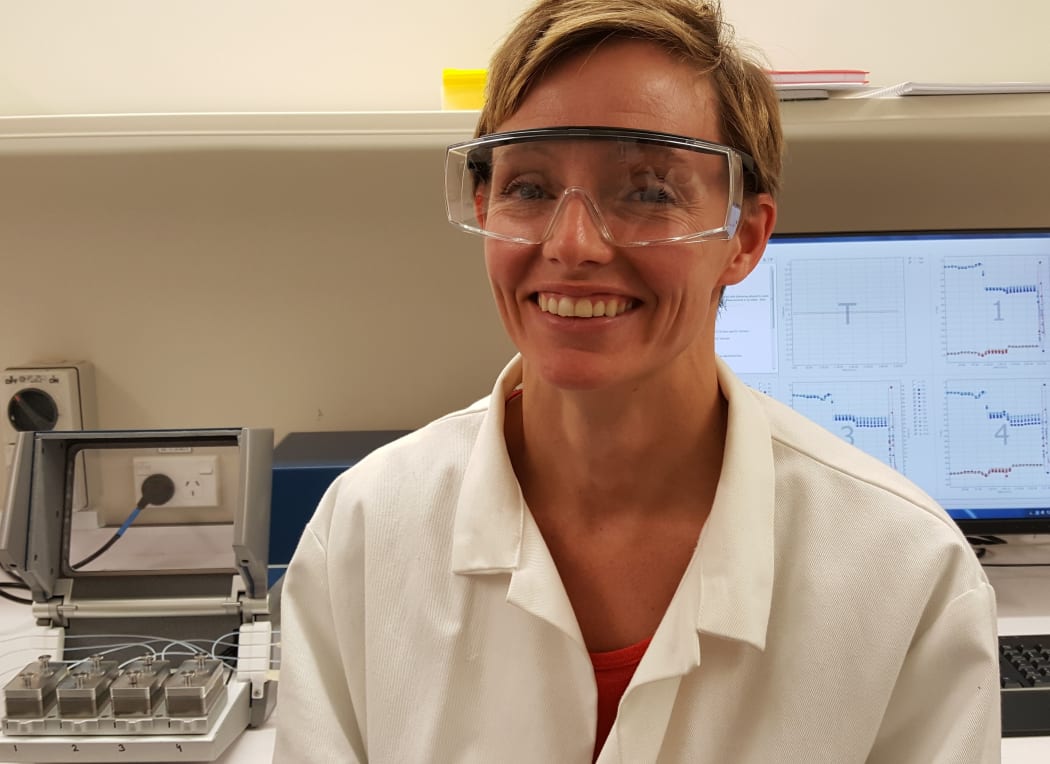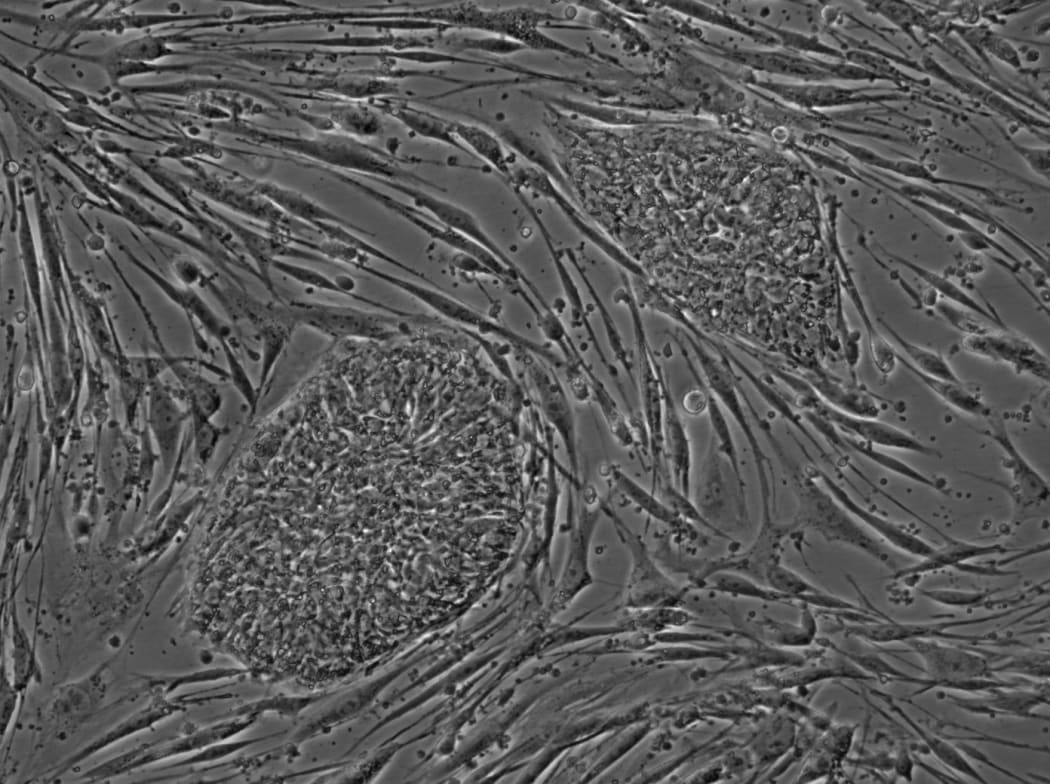Jenny Malmström is a chemical engineer at the University of Auckland, and she is interested in the interactions between cells and surfaces. When it comes to a joint implant, for example, it’s the surface of the implant that our body tissue interacts with.
At the moment she is investigating better ways of growing stem cells in the lab.
“Stem cells are amazing cells, because they can become anything,” says Jenny.

Jenny Malmström Photo: RNZ / Alison Ballance
Stem cells have the potential to be used as treatments for medical conditions such as Alzheimer’s and Parkinson’s disease, but the key to their use is the ability to grow them in the lab and ensure they become the exact type of cell that is needed.

Human embryonic stem cell colonies. In this image two human embryonic stem cell colonies are growing on a feeder layer of mouse embryonic fibroblasts. Photo: Public Domain
In the human body, stem cells are controlled by both physical and biological processes. The release of signalling molecules known as ‘growth factors’ is controlled by mechanical properties of the surrounding tissue, and it is this interaction that Jenny hopes to recreate in the lab, to better understand how it works.
Essentially she wants to make the stem cells work to get their ‘food’. She plans to do this by creating a special textured nano surface. It will include tiny lidded capsules, made from a special polymer, which will contain the growth factor. The lids will have a ‘handle’ that the stem cells recognise and they will be able to attach to the handle to open the lid and release the growth factors.

A quartz-crystal microbalance allows Jenny Malmstrom to measure minute nanogram amounts of molecular layers on surfaces. Photo: RNZ / Alison Ballance
Jenny is a Rutherford Discovery Fellow in the Department of Chemical and Materials Engineering at the University of Auckland, and this research is also funded by a Marsden Fast-Start grant.


